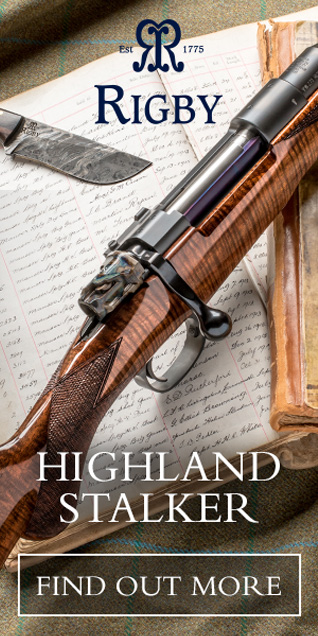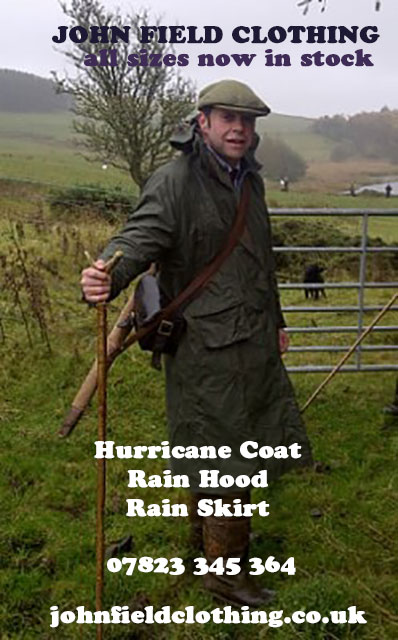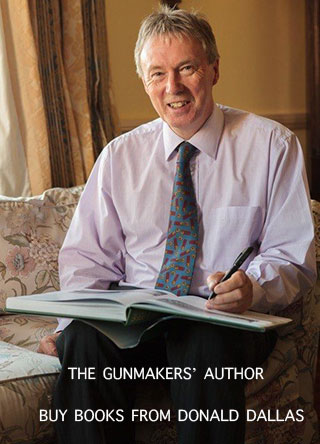It would be a reasonable bet to make that the majority of British sportsmen are familiar with the name of Westley Richards. No gun-maker founded in England currently in business has been trading here longer.
Established by William Westley Richards in 1812, when the gun of the day was powered by flint and black powder, Westley Richards flourished in Birmingham, as a maker of best quality guns and rifles, selling them to the cream of London society and the aristocracy, from their famous Bond Street shop, which opened in 1815 and continued to be a mecca for London sportsmen until 1917.
Always an innovator, William Westley Richards had racked-up nine patents to his name before he died in 1865. Notably, his design for a touch-hole and primer arrangement, followed by a ‘waterproof safety primer’, confirmed to even the harshest skeptics that the era of flint was over.
Westley Richards patents later cemented the viability of breech-loading guns with the first (1859) top-lever and the 1864 bolted ‘doll’s head’ means of securing barrels to breech.
However, the reign of the founder’s son, Westley Richards is probably the period best known to modern sportsmen, for it was then that the firm’s patents revolutionized sporting breech-loaders and signaled the end of the hammer gun era.
Westley Richards patented the famous Anson & Deeley hammerless ‘box-lock’ gun in 1875. With further patents following for single-triggers and ejectors, by 1900, Westley Richards patents covered the bolting (doll’s head), opening mechanism (top lever), lock (Anson & Deeley), ejector (Deeley) and single trigger of the sporting guns and rifles made by themselves and a broad swath of the British gun trade.
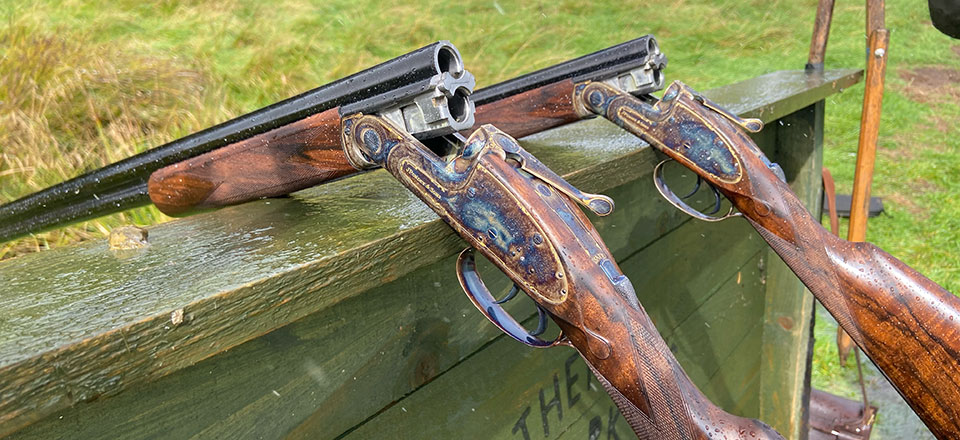
With the advent of the 1897 patent hand-detachable locks, created under the direction of, then Managing Director, Leslie B. Taylor, Westley Richards had created their modern side-by side. Guns and rifles made in the Birmingham factory today can still be identified by their adherence to these ground-braking in-house patents of over a century ago.
While many sportsmen continue to appreciate and use side-by side guns and rifles, the majority of guns seen on British shoots today are over & under in configuration.
This trend has its roots in the 1909 Boss over & under patent of John Robertson & Bob Henderson. The Boss is still made in London by the company that launched it and has been copied by numerous other makers, like Hartmann & Weiss, over the ensuing decades.
The other notable over & under design to have survived into the modern era is that of James Woodward. Woodward was bought-out by Purdey in 1948 and that purchase resulted in Purdey continuing to use the Woodward over & under as their house model. The 1913 patent Woodward has also been made by several other makers. Of course, patent protection for both these guns lapsed well before the Second World War.
There were numerous attempts to make over & under guns in the first quarter of the 20th century and Westley Richards was among the British firms to have a design of their own to offer the public.
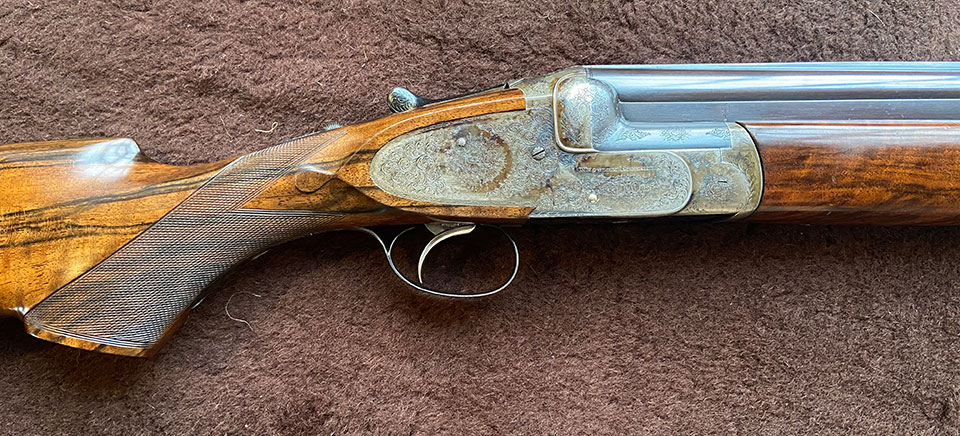
That first model was called the Ovundo and it was created by the same team that launched the hand-detachable lock; headed by Managing Director Leslie B. Taylor.
In concept, it was an over & under boxlock with hand-detachable locks, re-configured to suit barrels that are stacked one above the other. It was a logical move by the company, very much true to the direction in which Westley Richards gun design had travelled during the preceding thirty years.
Although the first Ovundo was sold in July 1914, just weeks before the First World War began, sales did not really begin to make an impression in the ledgers until the 1919, after hostilities had ceased.
The Ovundo had a higher-profile action than the Woodward and Boss designs, largely because it retained a lump under the barrel on which it hinged, unlike its rivals, with their split lumps either side of the lower barrel. This height differential is mitigated by the production of smaller bore guns, like 20-bore, which is probably that best suited to the Ovundo platform.
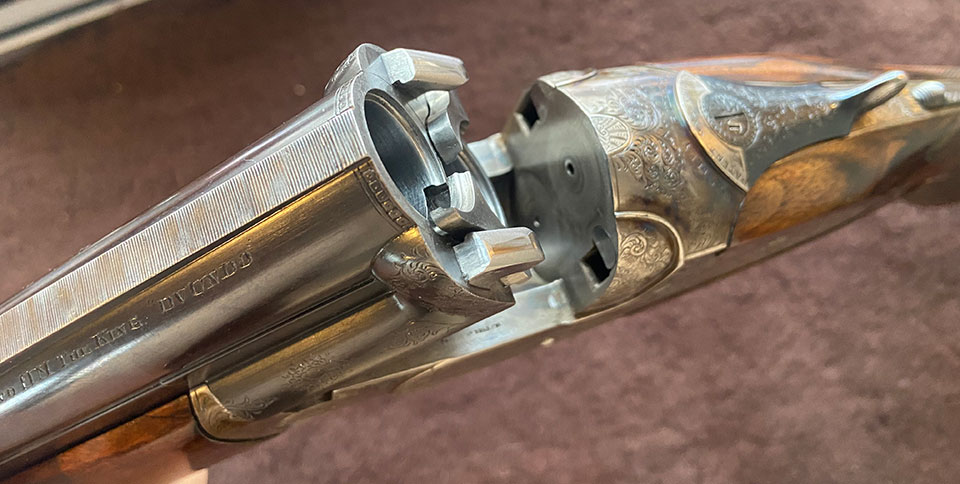
As well as the top-of-the-line, hand-detachable lock, version, the Ovundo was sold with fixed locks. The fixed-lock model could be had with or without decorative sideplates. In the latter case, either a straight back or a ‘fancy’ scroll back could be chosen.
The vast majority of London-made over & unders were of best quality and cost around a hundred and fifty pounds in the 1920s. Westley Richards, perhaps anticipating the appeal the new-model guns might have, offered them in a range of styles and qualities to appeal to the wider shooting public.
The base model Ovundo cost just sixty-five pounds. The best-quality with hand detachable locks was the same price as those London guns from Boss and Woodward.
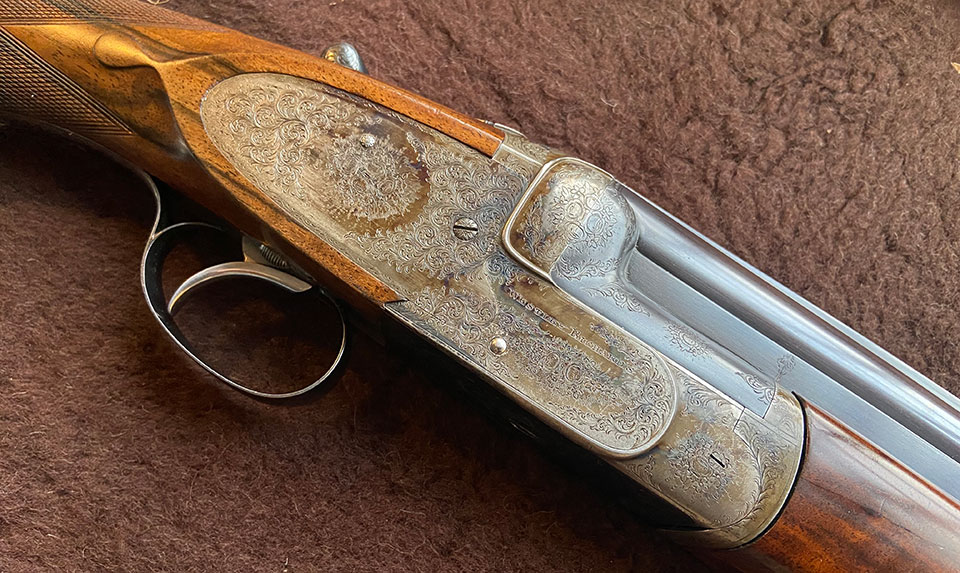
This First Period of Ovundo production essentially lasted from 1919 to 1938. Although the advent of Hitler’s War dealt the coup-de-grace to the Ovundo, production had tailed-off during the 1930s. The vast majority of the (approximately two hundred) Ovundos made during this period left the bench in the 1920s.
Predominantly a shotgun, the Ovundo platform was also used to create double rifles in a variety of calibres; such as .318, .240 and .350. Explora and Fauneta versions were also made. They were the Westley Richards answer to the Holland & Holland ‘Paradox’ shot and ball gun. Records show that the vast majority of Ovundos made were of hand-detachable lock form and in best quality. They were especially beloved of Indian princes.
This First Period of Ovundo production ended with the Second World War and, though Westley Richards survived the post-war years that killed-off many of our famous names, the company did not produce another over & under gun until Simon Clode, as Managing Director, revived the Ovundo in 2008.
Demand from customers prompted Simon directed a team of his gunmakers to create thirteen new Ovundo guns in 20-bore and 16-bore, on scaled action sizes.
the new Westley Richards over & under is a Woodward type
Prices for this run of guns started at just under forty-four thousand pounds. The new Ovundos were faithful copies of the original hand-detachable lock, single trigger ejector model in all but one or two very minor details. With all thirteen Second Period Ovundos sold, the model was once again mothballed.
A look at today’s Westley Richards catalogue in search of an over & under will prove fruitless. However, that will not be the case for very long. The company, now under the direction of Anthony Alborough-Tregear, has revisited the idea of a Westley Richards over & under for the future. However, it will not be an Ovundo.
The Ovundo was “a thing of beauty” according to Anthony but, though they look lovely and are mechanically both brilliant and intriguing, they are delicate and complex to build. A hard-used gun is time consuming to re-joint once it has shot loose and in the modern context it has disadvantages that make it less than the ideal platform for a modern sporting gun.
The new Westley Richards over & under is a Woodward type, with some minor modifications to the geometry and it will be built only in best quality. The concept was in response to demand as well as an observation that many of London’s gunmakers are increasingly focused on trigger-plate models, which are simpler and cheaper to make in a modern factory.
With a highly skilled workforce of traditionally trained gunmakers, Westley Richards is ideally placed to set the standard for best over & under shotgun production for years to come.
There are currently twelve guns in production; all commissions from long-established customers. Three are 12-bores, two are 20-bores, one is a 28-bore. An additional three pairs of 20-bores complete the run.
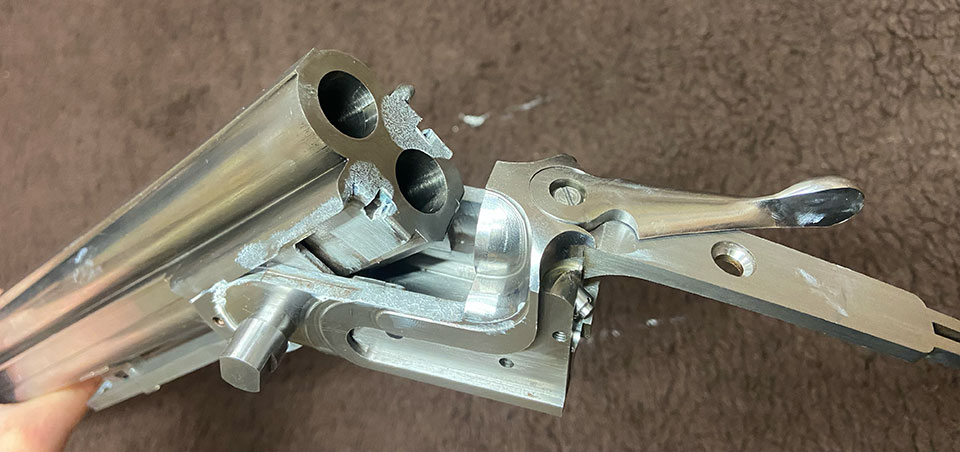
While the mechanics will be familiar, the file-up is all Westley Richards and distinctively so. With a beautifully rounded, grippable forend, a perfectly angled pistol-grip stock and carefully scaled actions for every gauge, the 20-bore gun feels perfect in the hand and beautifully set-up for grouse shooting.
With a solid rib, a traditional square bar and slightly bolstered radius, the gun looks elegant and perfectly proportioned, with very highly figured walnut stock. Finished guns will feature highest quality rose and scroll engraving in the traditional form that best suits these classic actions.
The single-trigger is a modern bob-weight type, for reliability. Above all, a huge amount of time, money and energy has gone into ensuring that every facet of production is utterly precise.
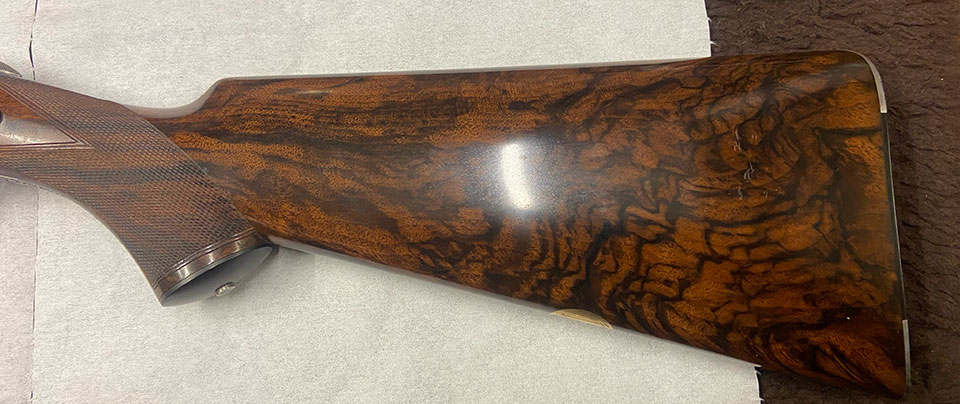
Modern English over & unders do not universally share the reputation for grace under pressure that they should, given the lofty price tags they carry. Westley Richards are emphatic in their intent to deliver beautiful, yet robust and reliable best quality over & under guns for modern sportsmen to use.
Take, for example, chambering. If chambers are cut even a fraction out of true, ejection problems will result. Westley Richards have taken steps to guarantee absolute precision, using one tool for only three-to-four chamber cuts before discarding it. That way, chambers will be clean, exact in dimensions and truly in line with the bore.
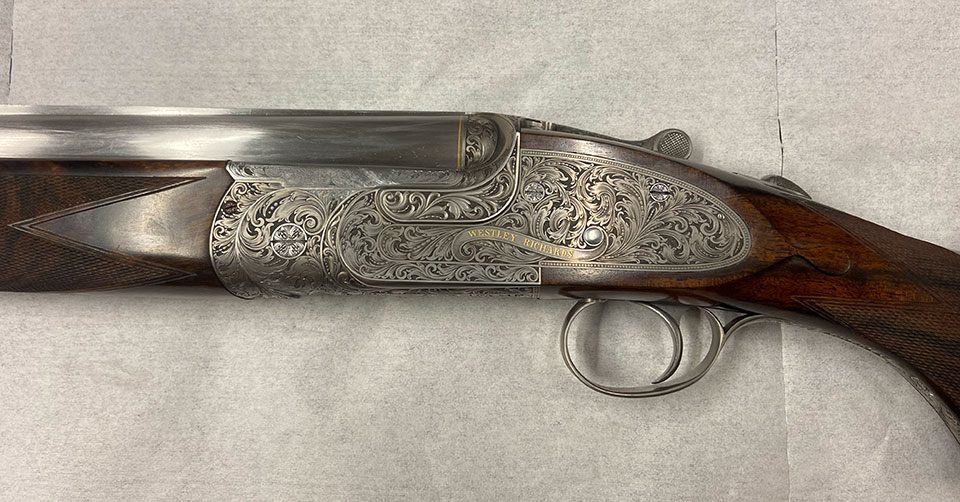
These guns are intended to deliver on style and quality as well as exceeding expectations of performance and functional excellence. Westley Richards is taking on London’s finest in a sector of the market hitherto sidelined.
London might contend that imitation is the greatest form of flattery, as the cliché goes, though Westley Richards can point to the fact that the Woodward patent gun is operated by a top-lever, is cocked by the fall of the barrels and the forend is removed by means of an Anson pushrod. All these features found their way onto the best guns of every modern maker via the bench of a Westley Richards craftsman. They have the patents to prove it.
Westley Richards over & unders are pitched at the premium end of the market and will appeal to sporting customers who appreciate the best and can pay for it. All the guns currently in production have been sold.
Published by Vintage Guns Ltd on

